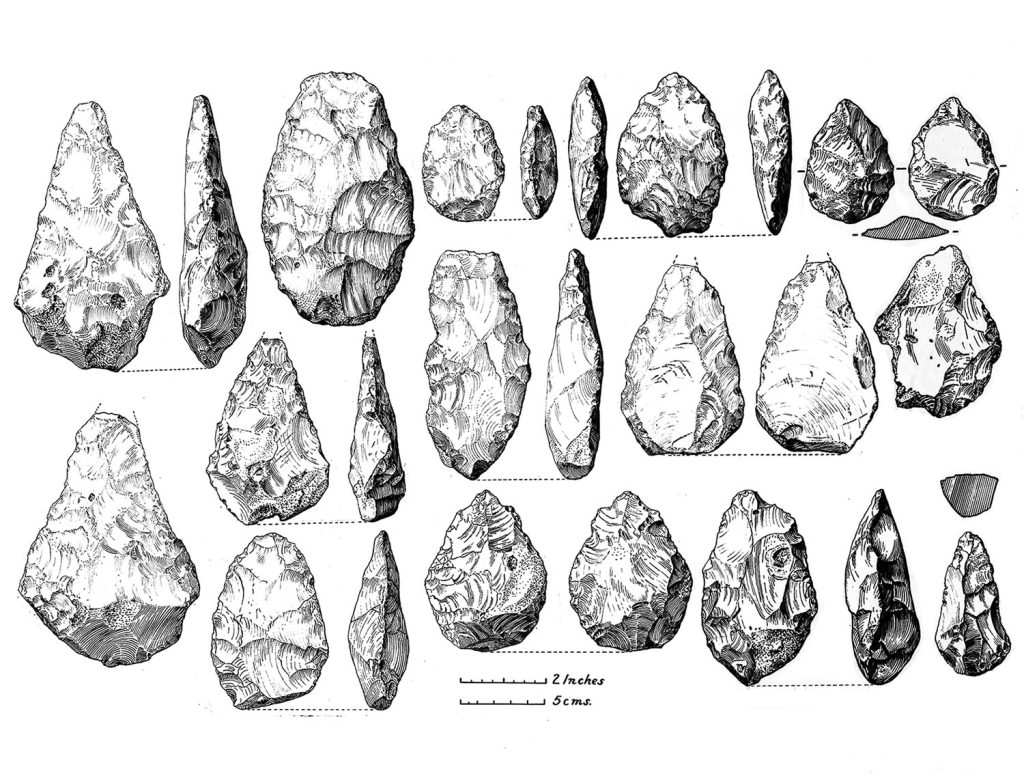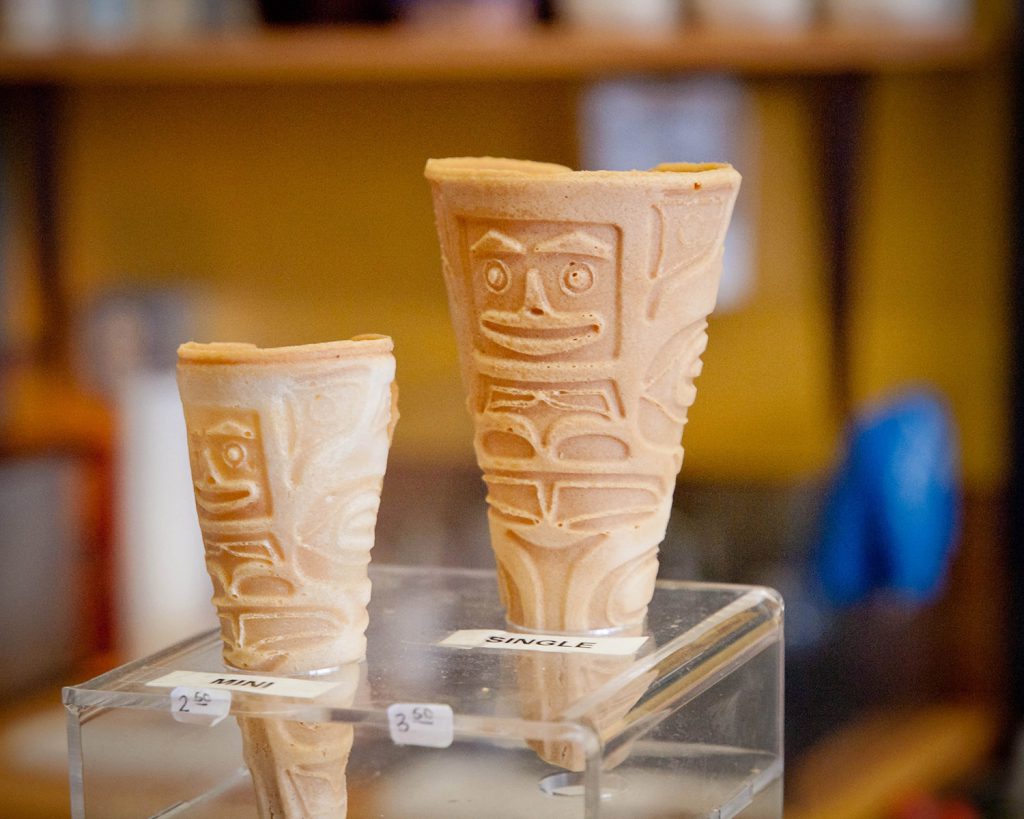Confronting the Specter of Cultural Appropriation

Humans celebrate many things—from rites of passage to religious events to groundhogs. One of the most intriguing, anthropologically speaking, is Halloween. Unlike other celebrations, this one features hordes of kids (and sometimes adults) dressed in costumes that some will find offensive. These include Native American princesses, hula dancers, and sheiks—some inspired by Disney movies targeted at children. Annually it prompts debate and anger from those who hate to see their culture turned into a stereotype.
So it’s a good time to throw a spotlight on the specter of cultural appropriation—the practice of taking or using an aspect of someone else’s cultural heritage inappropriately or without permission. But it is also an opportunity to look for this ghoul in more widespread places, and more problematic contexts, than the trick-or-treat lineup.
I am an anthropologically oriented archaeologist. I have worked with, and for, Indigenous peoples for 30 years to understand and help protect their heritage. From 2008 to 2016, I was also the director of a major international initiative that sought solutions to cultural appropriation and heritage issues—the Intellectual Property Issues in Cultural Heritage project (IPinCH), based at Simon Fraser University in British Columbia. These experiences have given me a fuller understanding of the nuanced nature of cultural heritage values.
Western society has, for centuries, turned to the cultural heritage of Indigenous peoples worldwide as a source of inspiration for stories, art, architecture, and more. In North America, this is seen in tribal names for sports teams, rock art designs on clothing, and the use of sweat lodges in New Age religious practices, to name but three examples. Often these uses are justified as “an appreciation of a great culture that lies in the past.” For Indigenous North Americans, however, these appropriations of their heritage amount to the unauthorized use of items and expressions that are still important within a very-much-living culture.
Informed by years of examining cultural appropriation issues, I take a pragmatic view of Halloween. I don’t disagree with the objections that many raise about the harm of perpetuating cultural stereotypes, using sacred or revered symbols and objects in a trivial way, or even having fun pretending to be a member of a repressed culture for a day. But I also argue that, at its core, Halloween is essentially a display of cultural anarchy. It has become an anything-goes event, with costumes encompassing familiar characters from movies and books (Moana), to creative reinterpretations (a Darth Vader helmet with a Snow White dress), to gruesome renderings (a zombie yielding a chainsaw).
Such creativity sometimes makes it hard to even identify what constitutes a “cultural” costume in the first place, let alone who has the right to wear it, or even how to rank it in terms of its offensiveness. Is a Pocahontas costume more or less acceptable than a slasher? What if the child wearing it is Native American? Is a zombie costume so far removed from Haitian folklore that it no longer counts as culturally derivative? Is a white child dressing up as a black superhero from the recent Black Panther movie a positive counterpoint to years of black children dressing as white superheroes? Is it honorific, or rather horrific, to choose a costume based on a character from the recent Disney movie Coco about the Mexican Day of the Dead?
There are, regrettably, no clear-cut answers to these questions. So much of the answer, in each case, depends on context. But there is still a benefit in asking the questions and reflecting on them. Halloween provides opportunities to discuss with children, especially older ones, why certain costumes might not be appropriate in their community. It is worth thinking through whether a costume might be offensive, to whom, and why.
Such questions might also open one’s eyes and mind to the real problem, which lies elsewhere— when adults take from a culture in inappropriate and commercial ways, causing offense or harm.
In some ways, we are today the product of everything and everyone that has come before us. The Acheulean hand ax—a distinctive prehistoric pear-shaped stone blade—was widely copied and revised from Africa to Asia and Europe from 1.6 million to 200,000 years ago. The Romans copied the Greeks, and then the Italians and English, among others, later copied both in everything from architecture (the British Museum’s grand entrance copies the Parthenon) to fine china (English Wedgwood copies a Roman vase). Many of the foods that are staples of diets around the world started in one place and were adopted by others: corn, beans, tomatoes, and potatoes from the Americas; wheat and barley from the Middle East; oranges from the Himalayan region; and apples from Central Asia.
Never before has there been such ease of access to world cultural heritage, both distant and ancient. Thanks to centuries of exploration and historical inquiry, now facilitated by worldwide travel and electronic communication, all world cultures are easily accessible.
This tends to fuel the notion that society does (and indeed should) benefit from mutually shared ideas and information. Cultural borrowing has inspired many modern creative works, like the retelling of Homer’s Odyssey in the 2000 movie Oh Brother, Where Art Thou? and David Byrne and Brian Eno’s use of sampled world voices in their 1981 album My Life in the Bush of Ghosts. I see both as creative examples of fair use of other cultures.
Yet the benefits to society of such creativity are tempered by the need to protect the interests of the creators. In Western society, this is usually done through copyrights, patents, and similar legal devices. But these generally don’t apply to the intellectual property of Indigenous peoples, which has been defined by responsibilities rather than economics, traditionally protected by customary law rather than legal means, and typically held through communal—not personal—ownership.
So how do we distinguish between fair use and exploitation, or between inspiration and commodification?
Cultural borrowing, which I see as relatively benign or neutral, is something inevitably found throughout all human societies. It’s a major part of how humanity has evolved. The items or technologies transferred in these cases—like the hand ax—tend not to take anything away from someone else.
Cultural appropriation is different. I define it as taking or using some aspect of someone else’s heritage without permission or recompense in inappropriate, harmful, or unwelcome ways. The harms include diminished respect for what is considered sacred, improper uses of special or sacred symbols, and the commercialization of cultural distinctiveness. There may also be threats to authenticity or loss of both artistic control and livelihood.
Sometimes the distinction between borrowing and cultural appropriation is obvious. For example, in the U.S. Southwest, images or representations of figures central to the beliefs of the Puebloan peoples (like kachinas, wooden figurines that represent supernatural beings, and kokopelli, the flute player) now adorn mailboxes, jewelry, clothing, and other products. Victoria’s Secret featured Native American–themed models with feathered headdresses. Further afield, Louis Vuitton modeled a line of clothing for men and other products on distinctive Maasai blankets and other cultural expressions. I consider all of these inappropriate.
But even for those of us deeply entrenched in this subject academically, sometimes the line is blurry. White folks have been called out for having their hair braided into cornrows, yet that and other hairstyles may not “belong” to just one group: There are examples of distinctive hair braiding going back to ancient times in what is today Germany, Egypt, and China. The same holds for claims of appropriating food traditions.
As part of our IPinCH project, we ran a blog series called “Appropriation (?) of the Month” (note the question mark) to highlight and explore examples, case by case, ranging from sports mascots to totem poles to traditional medicines. When the Vancouver 2010 Winter Olympics took an Inuit standing-stone figure as its emblem, for example, some celebrated it for using an Indigenous symbol to represent all of Canada. But many Inuit and First Nations protested that its use was inappropriate—from the north, not the west, for one thing—and diluted the distinctive meaning of the inukshuk.
Through my work, I am most familiar with the harms done to Indigenous communities, in particular, through cultural appropriation. As a result of colonialism, Indigenous peoples in Africa, the Americas, the South Pacific, and elsewhere have historically had little control over their heritage. They have lost their lands and sovereignty, and been forced to abandon their religion, language, and ways of life in many cases. All too often their lifeways, traditional knowledge, and cultural sites are viewed as part of the public domain, free for the taking and enjoyment of others. Totem poles in the Pacific Northwest and didgeridoos in Australia are both important elements of family history, identity, and ceremony for the culture holders, but have become entirely pervasive in souvenir shops. In such a context, the once-significant cultural items are emptied of their meaning.
Many Indigenous peoples do want to share elements of their culture—but in ways that are appropriate and respectful.
Understanding that there are substantial differences between Western and Indigenous worldviews is important. For many Indigenous peoples, ancestral beings may be part of this world, not relegated to some other dimension. To them, heritage may be considered a living thing, not a dead artifact in a museum. In some cases, there is no effective difference between an actual ceremonial object and a replica of it; the image of a supernatural being may embody that being in the design, whether it appears on an ancient ceremonial item or a concert T-shirt.
Understanding all of this is a first step to preventing cultural appropriation. The IPinCH project provided a helpful guide for clothing designers, artists, and others, including the public, to think about cultural appropriation. All producers have a responsibility to ensure that they acknowledge the source of their inspiration and also avoid using designs that are considered culturally distinct, special, or sacred. For those who genuinely do intend to celebrate a culture by drawing inspiration from it, a sensible first step is to reach out to members of the community intended to be celebrated and see if an opportunity exists to work in collaboration, with freely given consent and participation.
Working in a good way can lead to fruitful collaborations and mutually beneficial results. Mountain Equipment Co-op, a sporting goods and clothing store based in Canada, has, for example, worked with Coast Salish lawyer and artist Shain Jackson to develop policies to avoid “Indigenous-inspired” designs. Likewise, some festivals and events are now encouraging participants to avoid using cultures as costumes.
Some big challenges remain. Today, the consumer base is growing ever more savvy of its choices—taking note of where food, clothing, and other products come from. Many folks make efforts to eat locally grown foods and buy sustainable, fair-trade, ethical products. For now, however, too little thought is given to the cultures that are consumed. That needs to change.
As Halloween demonstrates, the specter of cultural appropriation looms large in our society today. Making informed decisions is key to assessing and hopefully avoiding the cultural, economic, or spiritual harm that poor decisions may entail.




























